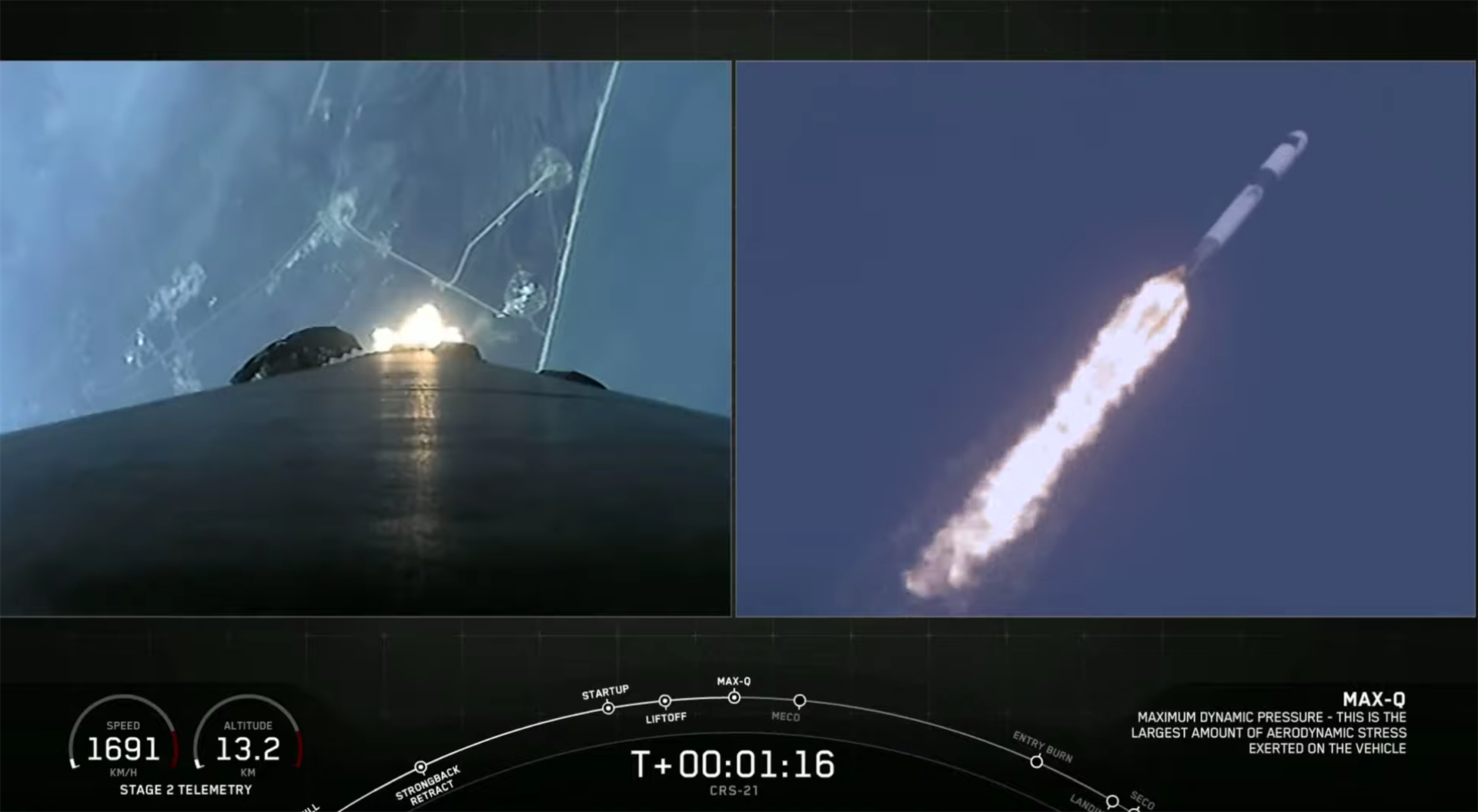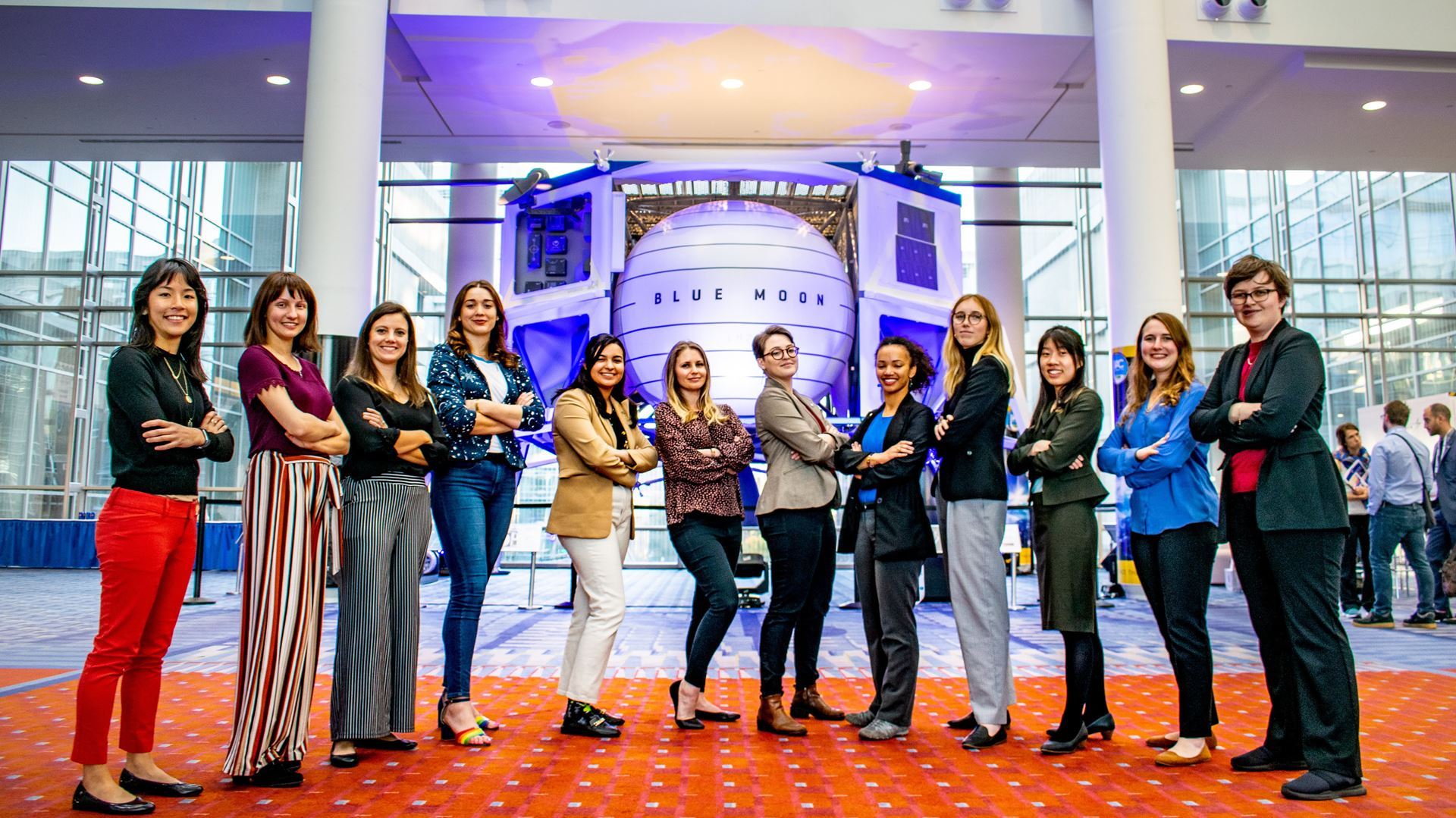The spaceflight ecosystem has seen several major achievements since our last entry. These include the successful docking of the Crew-1 complement with the ISS and the start of their expedition on-station, as well as the appointment of a new board of advisors at Blue Origin whose focus is the strategic development of sustainable spaceflight economy.

Launch of SpaceX CRS-21, Dec 6.
Assembly, integration, and testing (AI&T) of SLS for Artemis I continues, and the scientific aims for Artemis I have been outlined by NASA. They include goals for understanding planetary processes, interpreting the impact history of the Earth-Moon system, and investigating and mitigating exploration risks. The recognition of these areas of research focus have the effect of setting a precedent for how the resumption of lunar surface operations will sustain ongoing human presence.
Virgin has also planned its next test flight for VSS Unity, the latest SpaceShipTwo space plane. This will be the third crewed test flight for this architecture, and the first from Virgin’s Spaceport America location in New Mexico. A successful test will directly advance the initiation of suborbital space tourism on Virgin’s platform.
Recent robotic successes have advanced the understanding of the needs for crewed missions, including CNSA’s successful Chang’e 5 lunar sample return mission, as well as the return of samples from Ryugu by JAXA’s Hayabusa 2. In the same way as recent Mars rover missions have paved the way for human exploration, this recent work is the first in a series of steps for establishing sustainable crew operations.
Milestones in the advancement of mission architectures, from suborbital to cis-lunar to interplanetary transfer, will be enabled by qualified personnel specializing in human flight profiles. Traditionally, NASA’s human spaceflight teams have been trained in high fidelity analogs, high performance aircraft, and expeditionary settings. A variety of analogs have been developed across the globe for the purposes of training and research, including, for example, HISEAS and MDRS, and hundreds of analog crews have participated in these environments.
Due to the basic importance of experience in these settings, personnel from public and private sectors can be expected to take advantage of the opportunity they provide. Many commercial spaceflight trainers have excelled in developing the services that fill these training needs, from centrifuge experience to parabolic flight. They have also taken major strides in establishing industry standards for commercial spaceflight, and continue to define and quantify training for commercial astronaut candidates. ASP has partnered with several commercial training providers, recognizing the role of an industry-supported certification process in the development of a professional workforce.
Using the example of traditional FAA medical and qualification standards in use throughout commercial airflight, the utility of a certificate has less to do with its source and more to do with its common acceptance and status as a collectively-informed reference. ASP membership has contributed to the development of this type of standard, including a presentation by Casey Stedman on the need for standardized training.
We see, then, that as important as the establishment of a standard for certification is the method with which the standard is developed. That is, in order to effectively connect the supply of talent with the organizations that are advancing spaceflight milestones, qualifying personnel through training and certification must reference the demand for the associated skill set. ASP is connecting directly with space agencies, flight providers, and research institutions to ensure that any given training complement fulfills their needs.
Since training is necessary but not sufficient to meet professional needs, an important component of this work is the integration of resources available to engineers, scientists, pilots, physicians, and other candidate spaceflight professionals. In referencing the demand for qualified personnel, ASP will continue to guide the certifications of these sources of talent and to help provide access to funding and microgravity research opportunities.

ASP member Makiah Eustice on Industry Day, IAC 2019. Photo Makiah Eustice, 2019.
To support professional development in this way, ASP continues to advance opportunities across the development spectrum. As we continue this development, you can expect new discussions on the methods for ensuring qualified personnel can directly support upcoming milestones in human spaceflight.
Learn more about ASP’s work here.
